Besides just adding very informative and well researched articles to this blog, I thought it would be appropriate to actually give a blow-by-blow account of the project that we have going. It’s actually the project that inspired this blog to begin with.
So we hired a company to do it because we’re putting in two very large tanks which you’ll see in the photos. They started last week Monday and the first thing they did was to dig the holes for the tanks.
The Secondary Tank
Now around the back of the house is where a lot of rain water flows from the neighbor’s garden and from our own roof, to the extent that during a mediocre storm the paving is under about two inches of flowing water. So around the back of the house is where we put in the one 5000 litre tank. I will create a diagram of the property and where everything was placed in a future post.
They started digging and then found that there were pipes but they weren’t pipes that could be redirected because one of them is actually soil pipe coming from the toilets. So they had to stop digging. They put the tank in and then laid the pipes, and when they filled the pipe with water they found that it wasn’t flowing out of the other side so it wouldn’t fill the tank.
Check the Levels
Just a little tip the best thing to do is actually lay the pipe first and at the end, where the tank is to go, extend the pipe upwards. It can be a long pipe it, doesn’t matter how long it is as long as it’s not too short. Then fill the pipe with water until you can’t fill it anymore and it starts coming back on itself. With the pipes full of water you go to the pipe at the end, the one standing upright and tap it. You will hear where the pipe is hollow and where it’s filled with water. The point where it is filled with water is the point where the water will actually flow out and you can cut the pipe just below that because you will need to put a U-bend on it. From that you actually know how far you need to sink the tank into the ground.
If they had done that in the first place we would have had an easier time on the other side of the garden. They dug right down and they hit rock because we have a lot of rocks. They then laid all the piping, and there is a lot of piping on that side, and they just couldn’t get the water to flow out and into the tank. They started tapping to see where the water was and marked where to cut it.
By this time however they had already put the concrete bed in and placed the tank in the hole. They then had to take the tank out, hire a jack-hammer to get through the rock and then put redo the concrete bed and put the tank in again.
If they had started with the piping, found out how high the end pipe needed to be, they could have then determined how deep the hole needs to be dug and saved themselves a lot of time and headache.
With the back of the house because they couldn’t get any deeper they now had to move the tank to the opposite side of the courtyard which isn’t a problem except there’s a water pipe leading into the house and they hit that this morning. It’s still leaking tonight so we don’t have water until they fix it properly tomorrow. So I’m not very impressed with that, but overall the jobs going well. Fortunately the pipe that they have to contend with in the new spot can be redirected so they can dig right down.
The Water Flow
So at the front section we have a flat roof and we also have a pitched roof. They attached piping to all of the rainwater downpipes from the flat roof because they are 100mm pipes encased in the walls and through the columns and they go straight into the ground.
From the pitched roof we’ve got two standard downpipes. They have included a drain in the ground below the downpipes and that piping connects to the rest of the piping, goes around the pool and straight down the garden to the tank.
At the back of the house, all of our neighbours are above us but in the back left hand corner there’s a hole in the boundary wall where all the water from that neighbor comes through. This is one of the reasons why we get flooded.
From that neighbor’s house that water flows down steps and it splits and flows around the back and then around the front and goes into the pool. Where is splits we’re actually digging a trench and creating a channel with the brickwork so it directs all of that water straight around the back.
All of the water that is on the pitch roof on that side will also add to the flow around the back of the house and then when it gets to the courtyard it will go into a drain, through a few metres of piping and then into the tank, which will be sunk a lot lower than the one in the front.
I will do an update and I’ll show you how deep that tank will be compared to the main one at the front. It’s the main reason why they had to move the tank because they couldn’t dig any further and it really needs to go a lot deeper.
Putting it all Together
When the whole system is finished the tank at the back is going to have a 25 mm piping that is going to run from the bottom of the tank, underground around the house and to the main tank which is in the garden. The reason for that is because the one in the garden is the one that will be connected to the irrigation system which is around the house and it takes a lot of water. This should reduce the water bill exponentially.
When we had the sprinklers running everyday last year summer, when it wasn’t raining too much, our water bill doubled. So the one in the courtyard will connect to the one in the garden and when the one in the garden is empty we can then switch the pump on at the courtyard and pump that water through and fill the main one up. This will mean that we will have constant water. Obviously if we have a really bad dry spell and both thanks are empty we can then switch over to the municipal water.
Fill the Pipes
Another tip while I’m at it, just in case you are doing this yourself. When you’ve got the pipes laid and tanks in just stick a hose pipe down the top end where the water’s going to start going through the piping system and fill up the pipes. What will happen is that water stays in the pipe and then when it rains the new water from the roof and the ground just pushes the rest of the water through so the pipes stay full all the time and gravity and the incline just keep pushing the water through so that it fills the tanks.


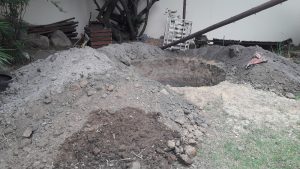
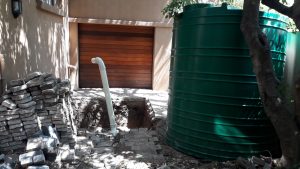

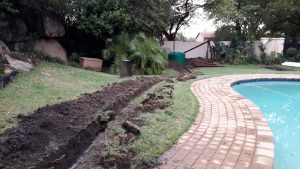
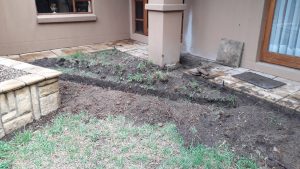
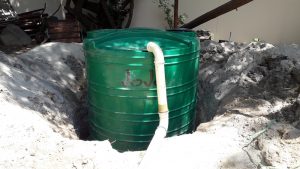
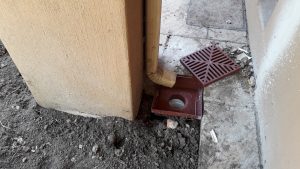

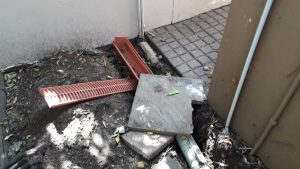
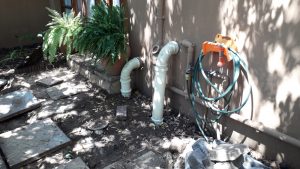

 I currently live in South Africa and we have recently started putting a rainwater harvesting system into our garden. I find the topic amazing and have done a lot of research with more to follow on different systems and even DIY options. I hope to share them all here.
I currently live in South Africa and we have recently started putting a rainwater harvesting system into our garden. I find the topic amazing and have done a lot of research with more to follow on different systems and even DIY options. I hope to share them all here.

